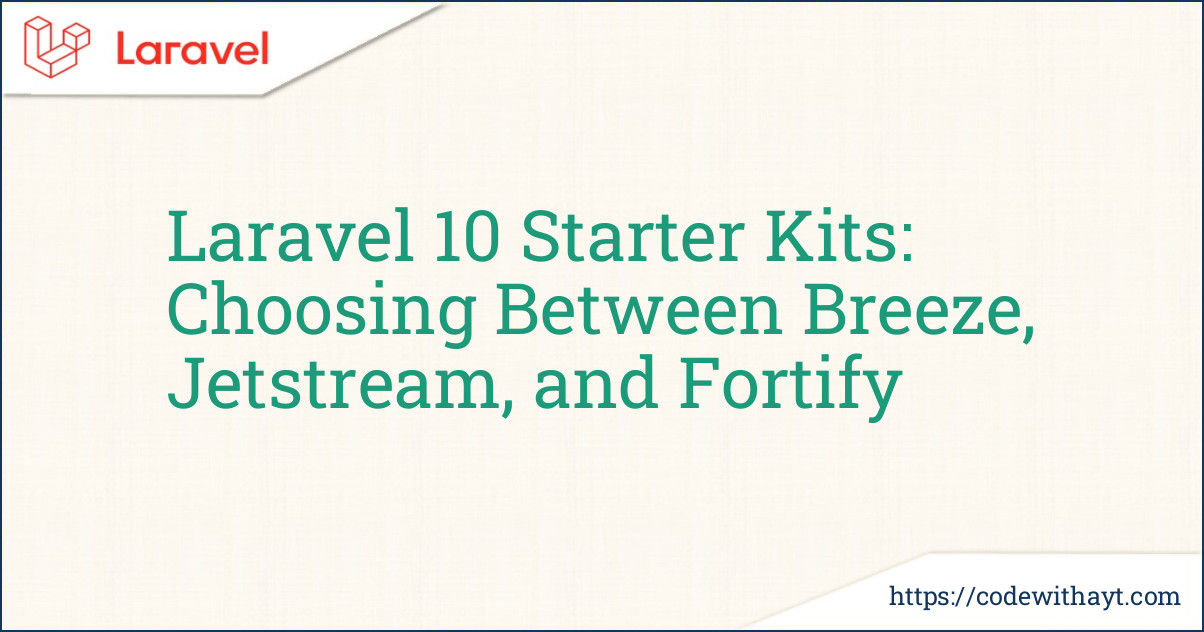Getting Started with Laravel 10 Starter Kits
If you’re jumping into Laravel 10, you’ve probably heard about Starter Kits. They’re like cheat codes to help you set up authentication and other essential features without starting from scratch. In this post, I’ll break down what Starter Kits are, why they’re helpful, and how you can get one up and running.
What Are Laravel Starter Kits?
Think of Starter Kits as pre-built authentication scaffolding provided by Laravel. Instead of building a user login, registration, password reset, and everything else from scratch, Laravel Starter Kits offer ready-made solutions that save you a ton of time. And it’s not just about authentication – they come with a sleek, modern UI and can help you build out other parts of your app more quickly.
In Laravel 10, the most popular Starter Kits are:
-
Breeze – A lightweight kit with minimal features for those who like simplicity.
-
Jetstream – A more robust option that includes everything Breeze has but also adds features like two-factor authentication and team management.
-
Fortify – While not a full Starter Kit, Fortify is an authentication backend package, which you can customize and extend based on your needs.
Choosing the Right Starter Kit
Before diving in, it’s good to know what you need. If you’re looking for a basic app with just user authentication, Breeze might be the best fit. But if you need advanced features like team support or two-factor authentication, Jetstream could be your go-to.
-
Breeze: Great for those who prefer to build their own front-end. It’s a simple starter, offering only essential features, like login and registration.
-
Jetstream: Comes packed with everything in Breeze but with added extras like team management, email verification, and profile management. It even supports Livewire and Inertia.js.
-
Fortify: More of a headless option, where you only get the backend functionality without UI. It’s excellent if you have a custom front-end in mind.
Setting Up a Starter Kit
Let’s walk through installing Laravel Breeze as an example.
-
Install Laravel Breeze First, make sure you’re in your Laravel project directory. Then, run the following command:
composer require laravel/breeze --dev -
Run the Installation Once Breeze is added, you need to install it. Choose your stack (Inertia, Livewire, or Blade), then run:
php artisan breeze:install - Run Migrations Breeze includes all the database migrations for user-related tables, so make sure to run:
php artisan migrate - Serve the Application Finally, start your server to see the login, registration, and password reset pages in action:
php artisan serve
You should now have a fully functioning authentication system. Laravel Breeze is great for anyone who prefers a simpler, more straightforward setup.
Customizing Your Starter Kit
Laravel Starter Kits are flexible, so you’re not stuck with the out-of-the-box look and feel. You can easily customize the design, routes, and even add new features. For example, if you’d like to add social login or change the UI theme, you can do that by modifying the provided views or adding packages as needed.
Wrapping Up
Starter Kits in Laravel 10 make setting up authentication and user management a breeze (pun intended!). They offer a quick, easy way to get your project up and running without having to build these features from scratch. Whether you’re going with Breeze, Jetstream, or Fortify, each of these kits has something unique to offer, making Laravel more flexible than ever.



